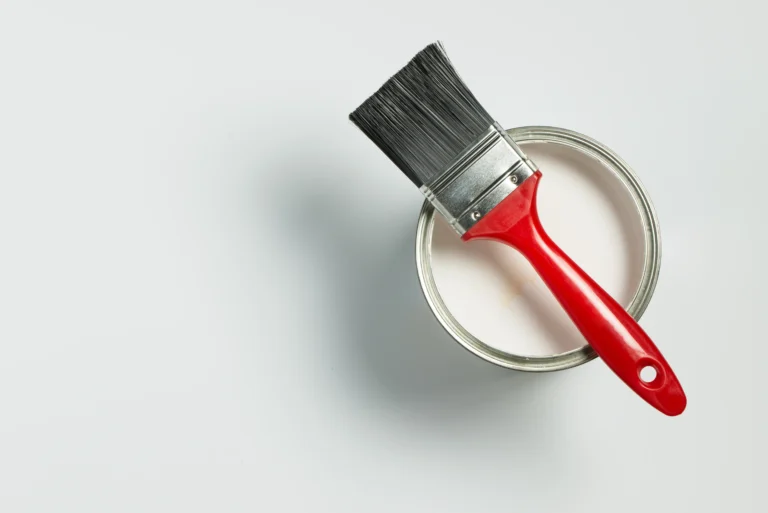Painting projects can bring vibrant new energy to a room, but even the most careful painter can find themselves with a splatter or two on their favorite shirt. Whether you’re a weekend DIY enthusiast or working on a professional job, knowing how to remove paint from clothes can save your wardrobe from permanent stains.
The success of paint removal depends heavily on the type of paint, the fabric involved, and how quickly you act. With the right technique, even dried paint isn’t necessarily a lost cause. Prompt treatment and the right materials are key to restoring your clothes to their original condition.

Identifying the Type of Paint
The first step in learning how to remove paint from clothes is identifying whether the paint is water-based (latex or acrylic) or oil-based. This makes a big difference in the approach you’ll take to cleaning it.
- Water-based paints (common for walls and ceilings) are usually easier to clean and respond well to soap and water, especially if still wet.
- Oil-based paints (often used on trim, furniture, or exterior surfaces) are more stubborn and require solvents like turpentine or mineral spirits to break down.
Look at the paint can for information about the formulation. Terms like “soap and water clean-up” indicate a water-based product, while instructions recommending paint thinner suggest it’s oil-based.

How to Remove Wet Water-Based Paint
Acting quickly is the most effective strategy when dealing with fresh, wet paint.
- Blot, don’t rub – Use a paper towel or cloth to gently blot the paint, lifting as much as possible. Avoid spreading the stain.
- Rinse under cold water – Run the backside of the fabric under cold water to push the paint out of the fibers.
- Apply liquid detergent – Rub a small amount of dish soap or laundry detergent into the stain. Let it sit for 5 to 10 minutes.
- Scrub gently – Use a soft brush or your fingers to agitate the stained area.
- Rinse and repeat if necessary, then launder as usual. Air dry the item to avoid setting the stain.
If the stain remains after one wash, repeat the steps. Avoid placing the garment in the dryer until the stain is fully removed.

Removing Dried Water-Based Paint
If the paint has already dried, removal becomes more challenging but not impossible.
- Scrape off excess paint with a dull knife or spoon.
- Soak in warm water mixed with a small amount of laundry detergent for 30 to 60 minutes.
- Use a stain remover or apply a solution of one part vinegar to two parts warm water.
- Scrub the area with a toothbrush or scrub brush, then rinse and wash as normal.
Persistence is key. Sometimes multiple cycles of soaking and scrubbing are required to completely lift dried paint from fabric.
Removing Oil-Based Paint From Fabric
Oil-based paint stains are more difficult to remove and require special attention.
- Scrape off excess paint carefully with a dull edge.
- Blot with paint thinner or turpentine – Always work in a well-ventilated area and test a hidden area of the fabric first.
- Use a clean cloth to blot the stain with the solvent, repeating as necessary.
- Apply dish soap to cut through remaining oils, then rinse thoroughly.
- Launder separately from other clothes and air dry.
Because solvents are harsh, they can damage delicate fabrics. Exercise caution and wear gloves during the process.

Dealing With Specialty Fabrics
Delicate materials like silk, wool, or synthetic blends require extra care. For these, avoid home remedies and instead consult a professional cleaner. Many dry cleaners have solvents and tools specifically designed to lift difficult stains without damaging fibers.
You can also bring the paint can label or a sample of the paint to the cleaner to help them choose the best treatment method.
Preventing Paint Stains in the First Place
Prevention is always better than cure. Wearing old clothes or a protective coverall is the best way to avoid stains. For more delicate or expensive garments, opt for full-coverage protection such as a painter’s jumpsuit.
When painting professionally or frequently, consider investing in reusable painting attire. Keeping a dedicated outfit for painting eliminates the risk of staining clothing you care about.

What About Fabric Paint or Stains That Won’t Budge?
Some types of paints, especially fabric paints or permanent acrylics, are designed to resist washing. If these get onto regular clothing, removal is significantly harder.
In such cases, your best option may be to repurpose the garment. Turn a stained shirt into a dedicated painting smock or use creative techniques to mask the stain, such as patches, embroidery, or dyeing.
Products That Help With Paint Stain Removal
There are a variety of commercial stain removers specifically formulated to tackle paint, grease, and ink. Products like Goof Off, OxiClean MaxForce, and Zout can be effective on both fresh and dried paint stains.
Always read labels and test these on a hidden area of the garment first. Not all fabrics react well to every chemical, and some color fading or damage can occur if not used properly.

Professional Support for Paint Mishaps
While many stains can be handled at home, some simply require more advanced care. At Four Seasons Painting Co, we take all necessary precautions to avoid spills and splatters during our work. But we also know accidents happen. That’s why our team is trained in containment and cleanup procedures that prevent damage to clothing, furniture, and flooring.
Our clients often ask for advice when they experience their own paint mishaps, and we’re happy to share solutions that work.
Trusted External Resources
For those looking to explore this topic further, check out the Paint Quality Institute and cleaning experts like Martha Stewart or The Spruce, which offer extensive guidance on fabric care and stain removal techniques. The American Cleaning Institute also provides a database of stain treatment tips organized by substance.

Conclusion
Knowing how to remove paint from clothes can save you from frustration and salvage favorite garments. Whether you’re dealing with latex or oil-based paint, acting quickly and using the right products can make a big difference.
While some stubborn stains may resist treatment, a combination of patience, technique, and preventive care can keep your clothes looking their best. And if all else fails, a dedicated painting outfit is always a good investment for your next project.




